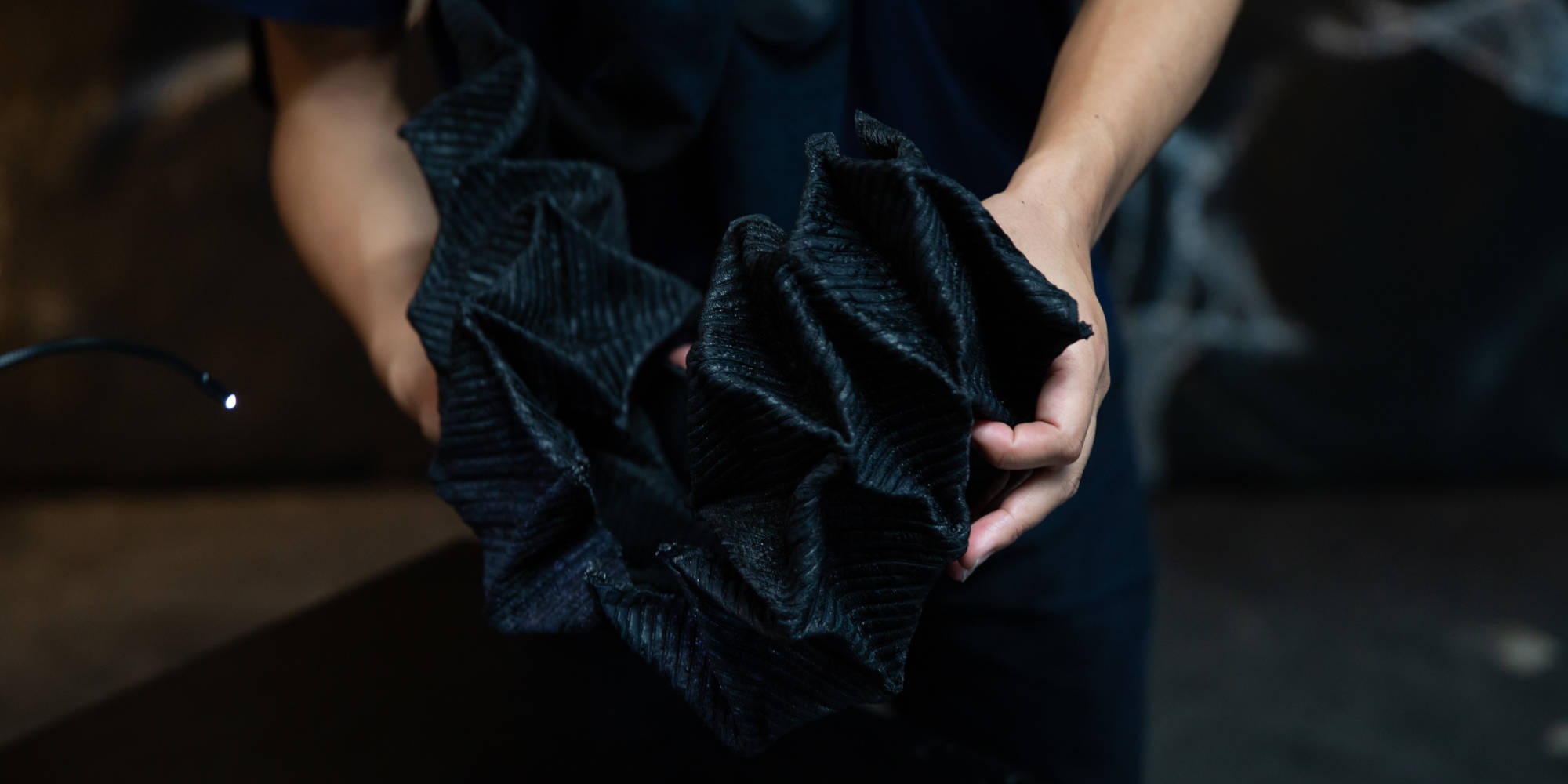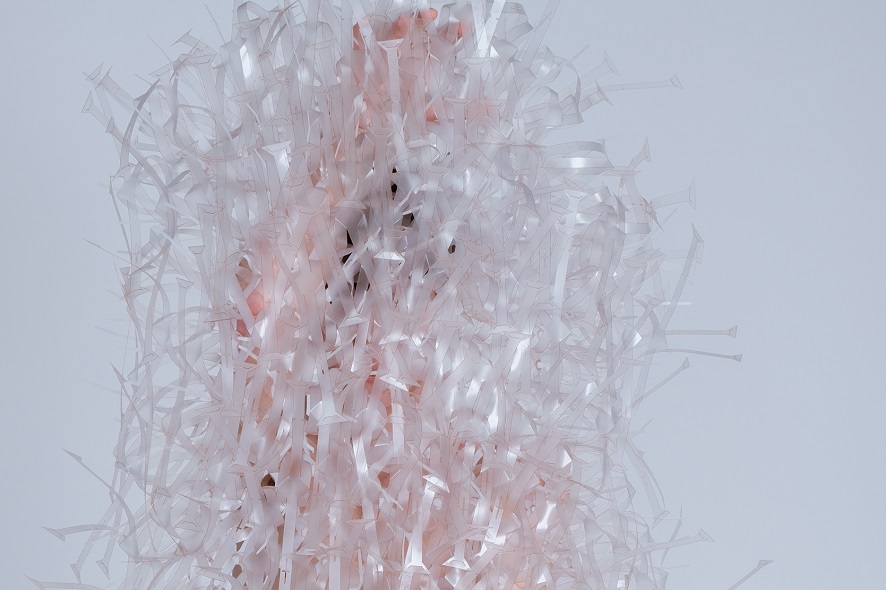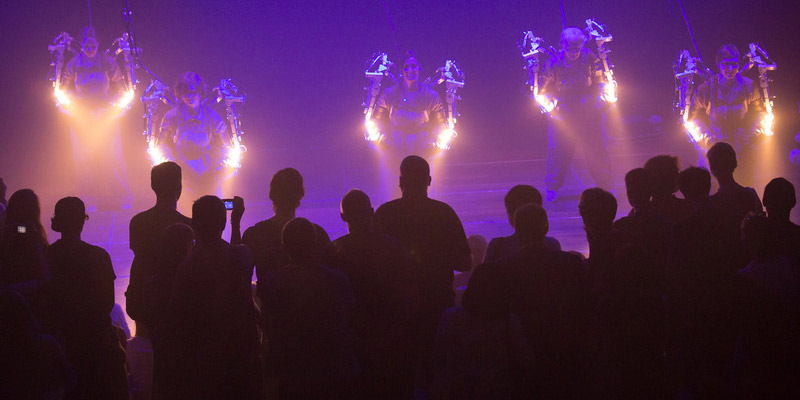Curators: Veronika Krenn, Christiane Luible, Ute Ploier, Nina Werhart
The Fashion & Technology program at Linz Art University was initiated about three years ago. It commenced as a bachelor’s degree program in autumn 2015; an internationally oriented master’s program will be offered beginning in March 2019. F&T is presenting a small selection of the first bachelor’s degree projects at the 2018 Ars Electronica Festival.
The interplay of fashion and technology is nothing new per se. One such example was of fundamental importance for the invention of the computer—the Jacquard loom. Its principle of perforated cards was the basis of the programming of Charles Babbage’s unfinished analytical engine. This means of storing and retrieving data was used until the 1960s. Today, the pairing of fashion and technology is most often associated with smart textiles and soft circuits, wearables and 3-D printers.
But Fashion & Technology is much more than this. The program is governed by an integrative philosophy. Technology and fashion don’t just encounter one another; they blend. This isn’t simply the consolidation of two separate spheres; their merger brings forth something totally new.
The Fashion & Technology program aims to impart a critical way of dealing with the social relevance of fashion as an instrument of differentiation, as an emancipatory means of reflection on the conditions of design and production as well as on the relationship between the body and its media-pervaded environment. This means not only deploying technology but also critically reflecting on technology by means of fashion. Fashion & Technology sees fashion as a complex fabric in which many different threads of discourse run together and materialize.
From its very inception, Fashion & Technology has experimented with alternative show formats. In 2016, the Ars Electronica Center’s Deep Space 8K hosted Anatomies of Fashion in which state-of-the-art CT software delivered a walk-through 3-D experience. In 2017, students’ designs were shown in stereoscopic selfie videos featuring industrial robots instead of human models. This year, a round-table discussion and keynotes are launching THE POLITICS OF FASHION: FASHION AS SOCIAL BOT, a new platform event designed to rethink and aesthetically form the phenomenon of fashion at the nexus of art and technology.
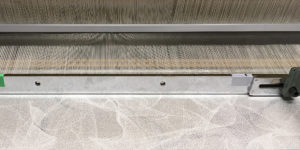
Complex Order
Ken Furudate (JP)
In this project, Ken Furudate has made the software to create weaving patterns by generative algorithms for jacquard loom, specially focusing on the structures of the fabric.
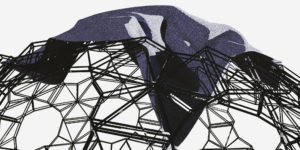
Generative Rendered Design
Michael Wieser (AT), Simon Hochleitner (AT), Viktor Weichselbaumer (AT)
Generative Rendered Design describes an open process of generating and presenting fashion.
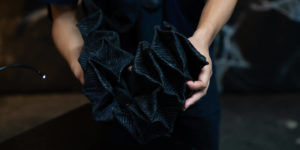
Heteroweave
Yasuaki Kakehi Laboratory (JP), HOSOO (JP), YCAM (JP)
The work aims to create new functional woven fabrics that can undergo dynamic changes in their characteristics by combining the structure of Japanese traditional Nishijin weave with new materials.
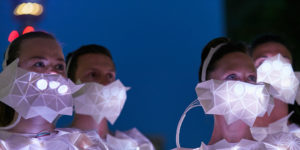
Human Sensor LDN
Kasia Molga (GB)
Human Sensor is a large-scale digital and performance artwork from award-winning artist and creative technologist Kasia Molga.
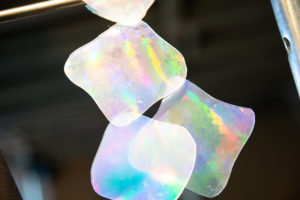
Visual Invisibility
Sara Kickmayr (AT)
Inspired by biological phenomena, this project deals with molecular technology and its aesthetic.
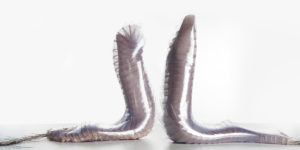
Life Instinct
Bart Hess (NL), Maria Dada (UK), Marco Coluccia (IT)
PVC worms, linked together with hairy cords, squirm subtly. It is an intense physical experience that comes with a little discomfort, but at the same time fascinates immensely.
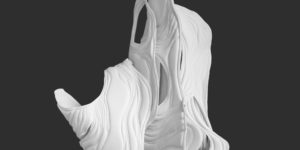
Sculpting Identity
Nina Krainer (AT)
For this project, an individual wardrobe serves as a “database.” Each piece of clothing is disrobed, photographed and analogously converted into an icon that constitutes the starting point of a new pattern-development process.
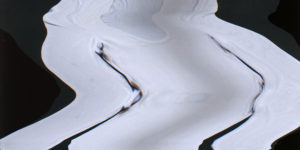
The Weakest Force
Mirela Ionica (RO)
The project The Weakest Force explores simple ways of using and simulating the effects of natural forces and phenomena in the design process.
